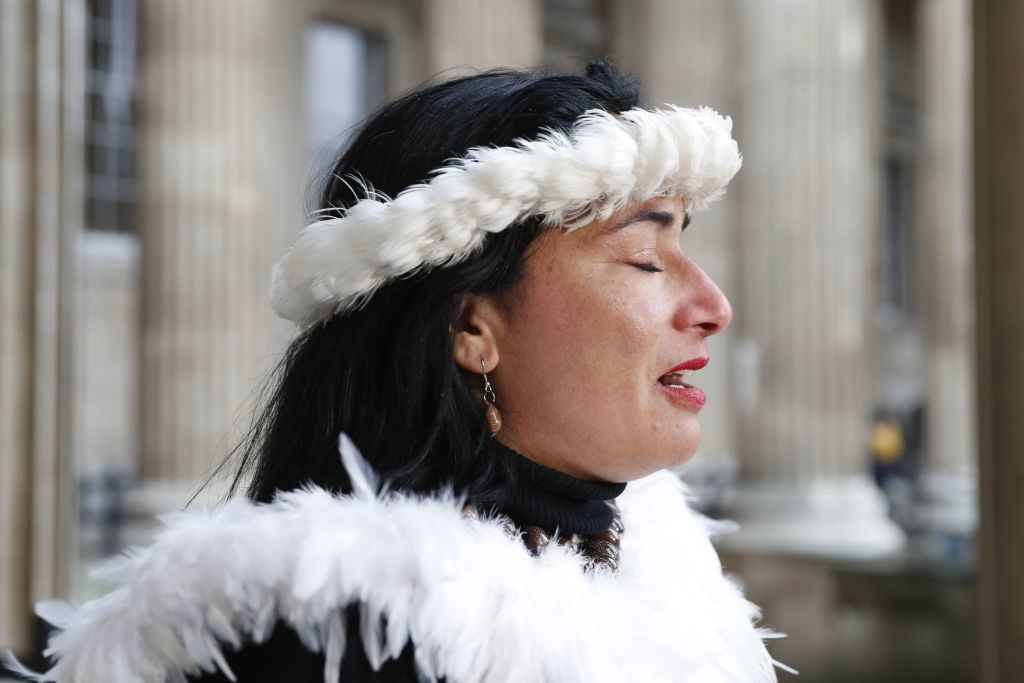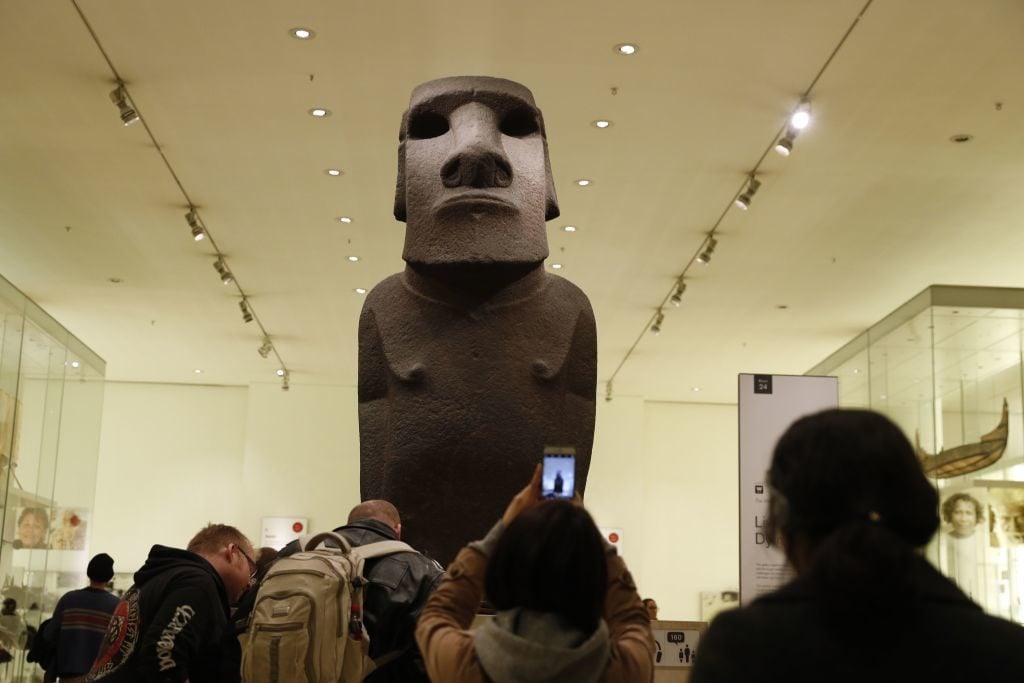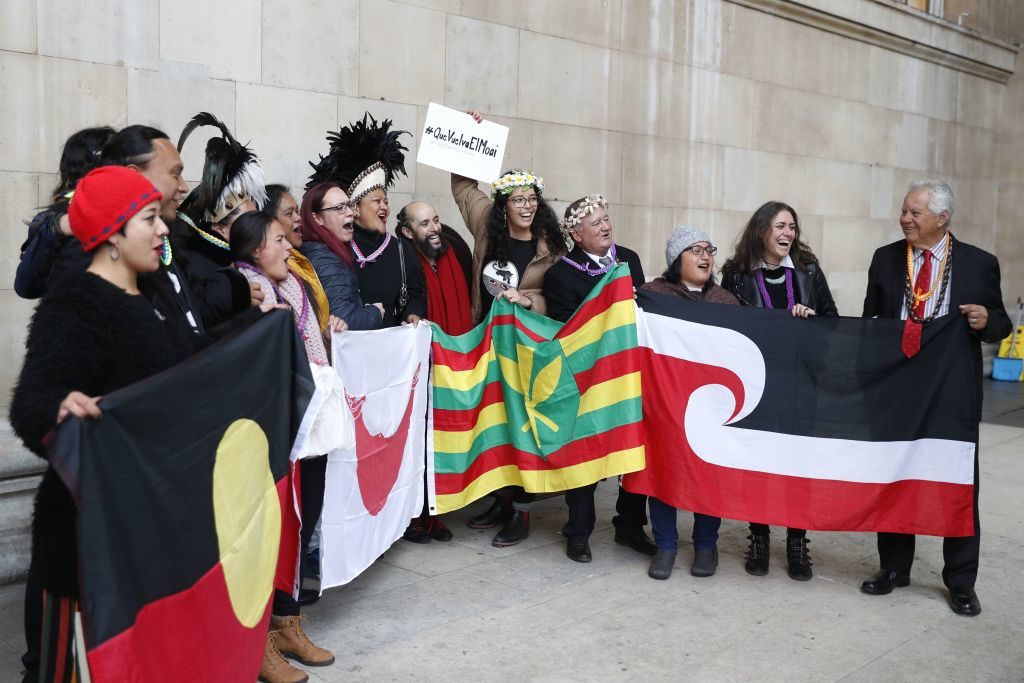Politics
Delegates From Easter Island Meet With the Top Brass at the British Museum to Demand the Return of a Monumental Head Sculpture
Museum authorities will travel to Rapa Nui to continue the discussion in the coming months.

Museum authorities will travel to Rapa Nui to continue the discussion in the coming months.

Naomi Rea

One of Easter Island’s iconic heads takes pride of place at the British Museum in London. The question now is how long it will remain there. A delegation from Rapa Nui (the native name for the island in the southeastern Pacific Ocean) met with top museum officials today to discuss the possibility of its repatriation.
The meeting marked the first time the museum has agreed to talks since the statue entered its collection 150 years ago. “We were delighted to welcome the delegation from Rapa Nui to the museum this morning,” a spokesperson told artnet News. Although the meeting did not result in a concrete resolution, British Museum authorities did accept an invitation from the delegation to continue the talks on Rapa Nui.
This week’s meeting was the museum’s answer to a letter the group sent requesting the statue’s return back in August. Joined by Chile’s minister for national property, Felipe Ward (Rapa Nui has been a part of Chile since 1888), and the UK’s Chilean ambassador David Gallagher, the group discussed the fate and significance of the eight-foot-tall head, called Hoa Hakananai’a.
The Rapa Nui people have noted that the basalt statue, known as a Moai, is sacred in their culture. The objects are considered living incarnations of indigenous ancestors, the spirits of which watch over their family members.

Hoa Hakananai’a. Photo by Adrian Dennis/AFP/Getty Images.
The figure of Hoa Hakananai’a was taken in 1868 by the crew of the HMS Topaze and gifted to Queen Victoria by the naval captain Commodore Richard Powell the following year, along with a smaller head known as Moai Hava. In turn, the Queen donated the statues to the British Museum. The smaller statue is currently on loan to the Royal Academy’s “Oceania” show. The British Museum’s larger basalt statue is currently on view in its Wellcome Trust Gallery.
A museum spokesperson said the monumental sculpture is one of the most popular and most photographed exhibits among its six million annual visitors. It is also one of only ten examples of the approximately 900 extant Moai made from basalt, and features unique carvings. Museums around the world, including in France, Belgium, New Zealand, and the United States, also have Moai in their collections.

Demonstrators outside the British Museum. Photo by Adrian Dennis/AFP/Getty Images.
During the meeting, the group spent time with Hoa Hakanana’ia and held a ceremony with offerings, dances, and songs before engaging in a “warm, friendly and open conversation,” according to the British Museum spokesperson.
“It was a pretty positive meeting,” the Chilean minister, Ward, said in a statement. “The fact that the authorities of the British Museum have been able to witness the meeting of the representatives of Rapa Nui with the Moai, opens an important door.”
Among the proposals on the table is the possible replacement of the statue with a replica carved by artisans from the island. The indigenous sculptor Benedicto Tuki has already volunteered to create the duplicate for free.
But the most important outcome of this initial meeting, Ward said, was an invitation extended by the Rapa Nui people to British Museum authorities to visit the island and continue the talks there. “That was accepted on the spot by the museum authorities and we are happy with that,” Ward said following the meeting with top officials, including the museum’s director Hartwig Fischer and deputy director Jonathan Williams.
The visit will be finalized in the coming months. The museum’s spokeswoman emphasized that the institution is keen to work collaboratively and welcomes discussions around future joint projects with Rapa Nui. That said, the fate of the statue remains unclear. The museum’s leadership maintains there is “great value” in presenting objects from across the world, as well as stories of other cultures, the spokesperson said.